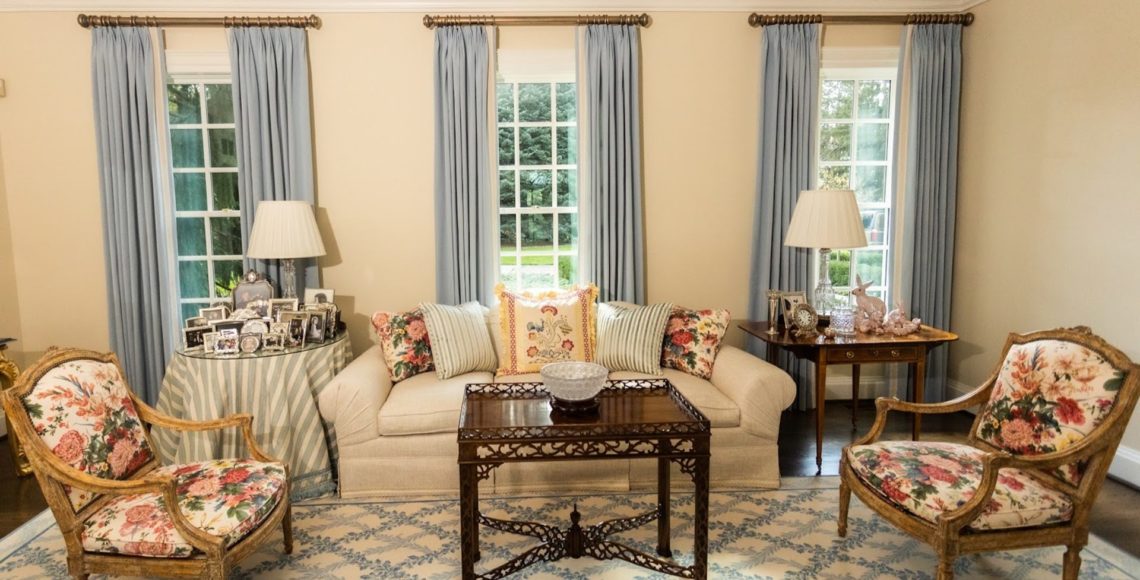Choosing the Right Window Treatments for Your Home – A Helpful Guide
A comprehensive guide to help homeowners select the best window treatments for their needs and preferences.
Introduction
Window treatments are essential for every home, as they not only control light and privacy but also contribute to the overall aesthetics of your living spaces.
With countless styles, materials, and options to choose from, selecting the right window treatments can be a daunting task. This comprehensive guide will help you navigate through the process and make the best decision for your needs and preferences.
Table of Contents
- Understanding Your Needs a. Light Control b. Privacy c. Insulation d. Aesthetics
- Popular Types of Window Treatments a. Curtains b. Drapes c. Blinds d. Shades e. Shutters f. Valances
- Choosing the Right Fabric and Material a. Linen b. Silk c. Velvet d. Cotton e. Polyester f. Sheer
- Customization Options a. Length and Width Adjustments b. Lining and Interlining Choices c. Hardware Selection d. Pleat Styles e. Motorization and Smart Home Integration
- Measuring for the Perfect Fit
- Installation Tips and Tricks
- Budgeting for Your Window Treatments
- Working with a Professional Design Consultant
Understanding Your Needs
Before delving into the various types of window treatments, it’s essential to understand your specific needs and what you want to achieve with your window coverings. Consider the following factors:
a. Light Control
Depending on the room’s purpose and your personal preferences, you may want to control the amount of light entering the space. For instance, blackout curtains are ideal for bedrooms, while light-filtering options are suitable for living rooms.
b. Privacy
Consider the level of privacy you desire in each room. Bathrooms and bedrooms often require more privacy, while living areas may benefit from sheer window treatments that allow light to filter through while maintaining a level of privacy.
c. Insulation
Some window treatments can help insulate your home, keeping it warm in the winter and cool in the summer. Insulated drapes, cellular shades, and shutters can contribute to energy efficiency and reduce your utility bills.
d. Aesthetics
Think about the overall design of your home and the look you want to achieve with your window treatments. Consider colors, patterns, and textures that will complement your existing décor.
Popular Types of Window Treatments
Now that you understand your needs, let’s explore the most popular types of window treatments:
a. Curtains
Curtains are unlined panels made from lightweight fabrics, making them ideal for light control and a touch of privacy. They come in various colors, patterns, and lengths, allowing you to create a casual or formal look.
b. Drapes
Drapes are lined, heavy panels that can be used for both light control and insulation. They often have a more formal appearance, making them suitable for living rooms, dining rooms, and master bedrooms. Drapes are available in various fabrics, patterns, and colors.
c. Blinds
Blinds are made of horizontal or vertical slats that can be tilted, raised, or lowered for light control and privacy. They come in a variety of materials, including wood, faux wood, aluminum, and vinyl. Blinds are suitable for bathrooms, kitchens, and other spaces where moisture may be present.
d. Shades
Shades are made from fabric or other materials that can be raised or lowered for light control and privacy. They come in various styles, including roller shades, Roman shades, cellular shades, and woven wood shades
e. Shutters
Shutters are durable, solid window treatments made from wood, composite, or vinyl. They have horizontal louvers that can be adjusted for light control and privacy. Shutters offer a classic, timeless look and can be used in any room.
f. Valances
Valances are decorative window treatments that are used to add style and character to a room. They are often combined with other window coverings like curtains, drapes, or blinds. Valances come in a variety of styles, shapes, and fabrics, allowing you to create a unique look.
Choosing the Right Fabric and Material
The fabric or material you choose for your window treatments will have a significant impact on their functionality and aesthetics. Consider the following factors when choosing your fabric:
a. Linen
Linen is a natural, lightweight fabric that provides a casual, airy look. It offers some light filtering and is suitable for living rooms, dining rooms, and bedrooms.
b. Silk
Silk is a luxurious, elegant fabric that adds a touch of sophistication to any room. It is often used for drapes and can be lined for added insulation and light control. Silk is ideal for living rooms, dining rooms, and master bedrooms.
c. Velvet
Velvet is a heavy, plush fabric that offers excellent insulation and light control. It creates a rich, opulent look, making it perfect for formal spaces like living rooms and dining rooms.
d. Cotton
Cotton is a versatile, durable fabric that can be used for curtains, drapes, and shades. It comes in various colors, patterns, and weights, allowing you to create a tailored look for any room.
e. Polyester
Polyester is an affordable, low-maintenance fabric that is resistant to wrinkles, fading, and stains. It is suitable for curtains, drapes, and shades in any room of the home.
f. Sheer
Sheer fabrics are lightweight and allow light to filter through while providing some privacy. They can be used alone or layered with other window treatments for added style and versatility.
Customization Options
To create window treatments that perfectly suit your needs and preferences, consider the following customization options:
Length and Width Adjustments
Custom window treatments can be made to fit any window size, ensuring a perfect fit and a tailored look.
Lining and Interlining Choices
Choose from various lining options, including blackout, thermal, and standard lining, to achieve the desired level of light control, insulation, and privacy.
Hardware Selection
Select from a range of curtain rods, brackets, finials, and tiebacks to complement your window treatments and enhance your room’s overall design.
Pleat Styles
Choose from various pleat styles, such as pinch pleat, inverted pleat, and goblet pleat, to create a unique look and ensure proper function.
Motorization and Smart Home Integration
Motorized window treatments can be controlled via remote control, smartphone app, or integrated with your smart home system for added convenience and functionality.
Measuring for the Perfect Fit
Accurate measurements are crucial for ensuring your window treatments fit perfectly. Measure the width and length of your windows, considering any overlaps and allowances for your desired style. Make sure you are measuring for blinds vs drapery. Consult a professional if you are unsure of the correct measurements.
Installation Tips and Tricks
Proper installation is essential for the functionality and appearance of your window treatments. Follow the manufacturer’s instructions and use the appropriate tools and hardware. If you are not confident in your abilities, consider hiring a professional installer.
Budgeting for Your Window Treatments
Window treatments can range from affordable to extravagant, depending on the materials, customization options, and professional services required. Determine your budget and prioritize the features that are most important to you.
Working with a Professional Design Consultant
A professional design consultant can guide you through the process of choosing the perfect window treatments for your home.
They will evaluate your space, discuss your design preferences, and recommend suitable styles, fabrics, and customizations. Working with a design consultant can save you time and ensure that your window treatments meet your functional requirements and aesthetic goals.
Conclusion
Choosing the right window treatments for your home can greatly impact the functionality, comfort, and appearance of your living spaces.
By understanding your specific needs, exploring popular types of window treatments, and considering various fabrics, materials, and customization options, you can create a tailored solution that enhances your home’s overall design.
Remember to measure accurately, budget wisely, and consult with a professional design consultant if needed. With careful planning and consideration, you can transform your home with the perfect window treatments that truly reflect your individual style and preferences.


